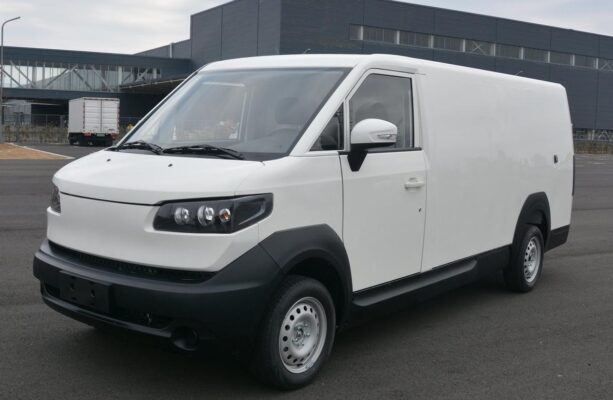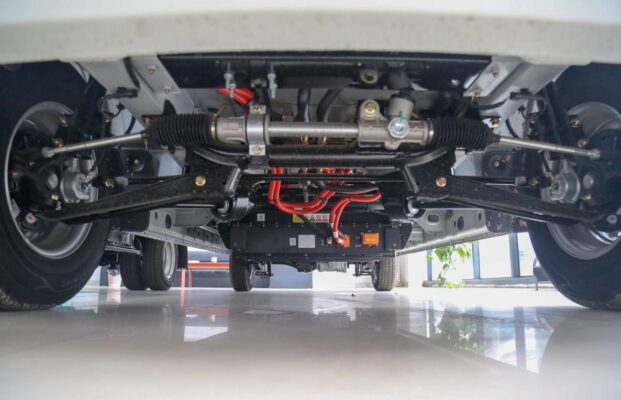Electric Truck Knowledge
What are the Pain Points in Charging New Energy Logistics Vehicles?
Posted on by Electric Trucks
New energy logistics vehicles have gained extensive application in the express delivery and urban distribution logistics sectors and are widely appreciated for their low usage costs. Nevertheless, numerous challenges have emerged during their development, and one of the prominent issues lies in the charging process.

Let’s commence with the analysis of the slow charging mode:
- The most significant predicament associated with slow charging is the matter of a dedicated parking space. Absent a fixed parking spot, applying for the installation of a charging pile becomes an insurmountable hurdle. The lack of a stable and dedicated location severely restricts the accessibility and convenience of charging for vehicle owners.
- The charging duration poses another substantial concern. Slow charging typically adds only 3.3 kWh of electricity per hour. For a vehicle equipped with a 40 kWh battery, it demands more than 10 hours to achieve a full charge. This extended time commitment can be highly inconvenient, especially for those with tight operational schedules and urgent delivery requirements.
- Even for customers fortunate enough to possess a fixed parking space, they often encounter communication obstacles with property management regarding circuit layout and related matters. Negotiating and obtaining approval for the necessary infrastructure modifications can be a protracted and frustrating process.
- Some electric vans come equipped with on-board charging guns. Ia, for those residing in high-rise buildings, the act of drawing a power cord from an upper floor presents multiple issues. Not only is there a likelihood of property management’s objection, but the paramount concern lies in safety. Factors such as rain exposure and cord abrasion can potentially lead to electric leakage, posing serious risks to both property and life.
- The electrical capacity constitutes yet another critical factor. A substantial electrical draw can trigger an excessive household electricity load, resulting in frequent tripping of circuit breakers. This not only disrupts the charging process but also potentially affects the normal functioning of other electrical appliances within the household.

Now, turning our attention to the fast charging mode, it too is riddled with significant pain points:
- The infrastructure of charging piles remains incomplete. Even in premier cities like Shanghai, locating charging stations in remote or less developed areas proves to be a formidable task. It is not uncommon to have to travel ten or more kilometers to reach a functional charging station. In some instances, charging piles were installed merely to secure state subsidies without due consideration for strategic placement and actual demand.
- The issue of charging pile damage is widespread. After finally locating a charging station and connecting the charging pile, the disappointment of discovering a non-functional unit is all too common. Some companies faced power supply or connection glitches during the installation process. Moreover, given the lack of consistent revenue post-installation, subsequent maintenance efforts often fall short, leaving many charging piles in a state of disrepair.
- The problem of parking space occupation is rampant. This predicament is likely familiar to anyone who has driven a new energy vehicle. Currently, the majority of charging piles are situated within parking lots, yet dedicated parking areas specifically for charging are conspicuously absent. Parking is already a major headache in first-tier cities, and any available spaces are quickly snapped up.
- The electricity price presents a considerable burden. In Shanghai, the base price of fast charging piles hovers around 1.8 to 2.2 yuan. For an lori ni iyaya livaliva with a 90 kWh battery capacity, a full charge can cost nearly 200 yuan, yet it only enables a travel range of approximately 200 kilomita. When one computes the cost per kilometer, it may even surpass the fuel expenses of diesel vehicles.
- Voltage mismatch poses a technical hurdle. Some light trucks now require a charging voltage of 750V. Ia, many existing fast charging stations still operate at a charging voltage of approximately 500V. When such a vehicle approaches these stations, it is simply unable to charge. It is earnestly hoped that charging pile deployment enterprises will expeditiously upgrade their systems, align with national policies, and ensure the provision of essential services.
- Communication protocol disparities can also impede the charging process. When a vehicle approaches a charging pile for charging, a seamless communication protocol must be established between the charger and the charging pile. In cases where the charging pile enterprise upgrades its software but the charger enterprise fails to synchronize effectively, charging becomes impossible.
- Parking fees add an extra layer of expense. Some charging piles are located within residential areas or shopping malls, where the imposition of high parking fees can be prohibitive. For lori ni iyaya livalivas, which are primarily purchased for commercial purposes and revenue generation, the daily accrual of substantial parking fees during the charging process can significantly erode profitability.

In conclusion, the charging infrastructure for new energy logistics vehicles is currently beset with multiple challenges that urgently require comprehensive solutions. Addressing these pain points is essential to fostering the widespread adoption and sustainable growth of this environmentally friendly mode of transportation within the logistics industry. Concerted efforts from both the public and private sectors, including enhanced infrastructure planning, technological advancements, and improved regulatory frameworks, are indispensable for overcoming these obstacles and creating a more seamless and efficient charging ecosystem.